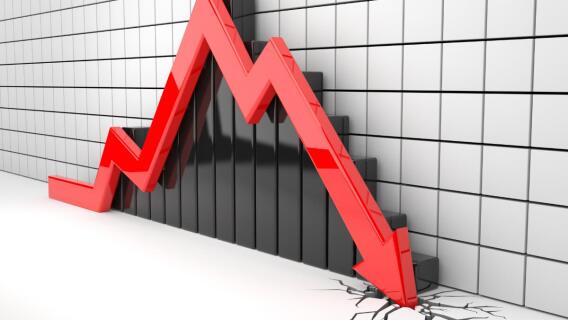A second stock market crash related to coronavirus seemed inevitable. Treat it like an opportunity.
We knew this was coming. With stocks rallying 44% at a time when U.S. unemployment rose to levels not seen since the Great Depression, the stock market vs. economy divide had never seemed wider. Surely, stocks couldn’t continue rising for months as if COVID-19 didn’t exist and 40 million-plus Americans weren’t freshly out of work…right?
Right.
While all the technical signs were positive, and all of Cabot’s highly accurate market timing indicators strongly point to stocks being higher, and probably much higher, in the intermediate and long term, a second stock market crash was inevitable. It was simply a matter of when. Now, it appears we have our answer.
[text_ad use_post='129627']
As of this writing (mid-day Monday), the S&P 500 is down 7% in the last five trading sessions, hitting its lowest point since May 26. That doesn’t mean we’re headed for a double bottom that would take stocks all the way down to their March 23 nadir. But the selloff is likely to continue for the next few days, and perhaps weeks.
And that’s a good thing, in my opinion. The two-and-a-half-month rally that lasted from late March to the second week of June was an encouraging bounce-back from one of the quickest, deepest crashes in stock market history. But it was unsustainable given the current economic environment and ongoing (actually worsening, globally) pandemic.
That doesn’t mean you should start selling stocks again. If some of the weaker performers in your portfolio truly break down and trip your stops, then sure—kick them to the curb. But the most important thing is to not panic, even if stocks end up falling 15%-20%. They will bounce back. They did after the initial coronavirus crash, which was about as abrupt, scary and bleak as it gets. And they will again.
Until then, treat this second stock market crash as an opportunity. It’s a chance to buy stocks at cheaper prices, to get in on red-hot titles like Amazon (AMZN), Netflix (NFLX) and Tesla (TSLA) after they’ve cooled off a bit. Buying great stocks at bargain prices is the goal of any investor. And big selloffs like the one that’s currently materializing provide prime opportunities to do just that.
Things had gotten too frothy. When bankruptcy stocks like Hertz (HTZ) and Macy’s (M) were getting snatched up by new investors on Robinhood as if they were oversold growth stocks, it was a pretty clear sign of a stock market top. It was time for Wall Street to sober up and come back to reality a bit. Maybe the detox period will only last a week or two, but it’s a reminder that we are far from out of this mess.
If you need help navigating the next few weeks, and perhaps months, now that market turbulence has returned, we’re here to help. Specifically, if you want to know what this second stock market crash means in terms of how it affects the larger investment picture, I highly recommend subscribing to our Cabot Growth Investor advisory, where Mike Cintolo has been beating the market for two decades thanks to a disciplined set of market timing indicators that he’s been honing, adhering to—and right about—for years.
To learn more, click here.
Regardless, don’t fear this second selloff. Ride it out, and pounce on new buying opportunities when it’s all over.
[author_ad]

